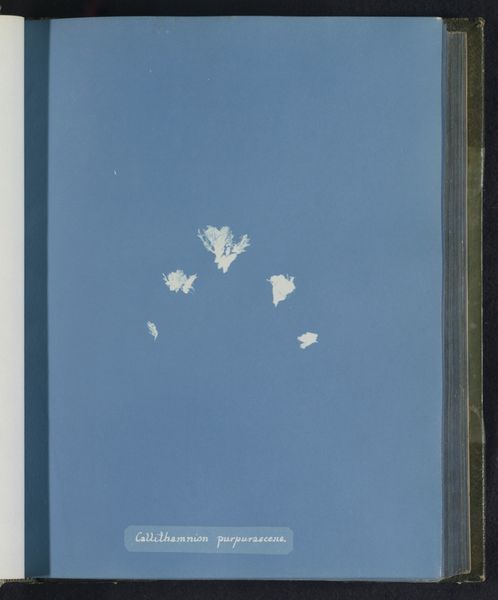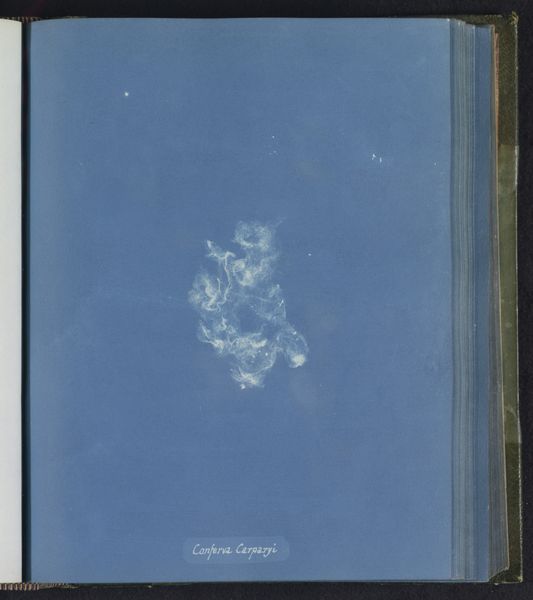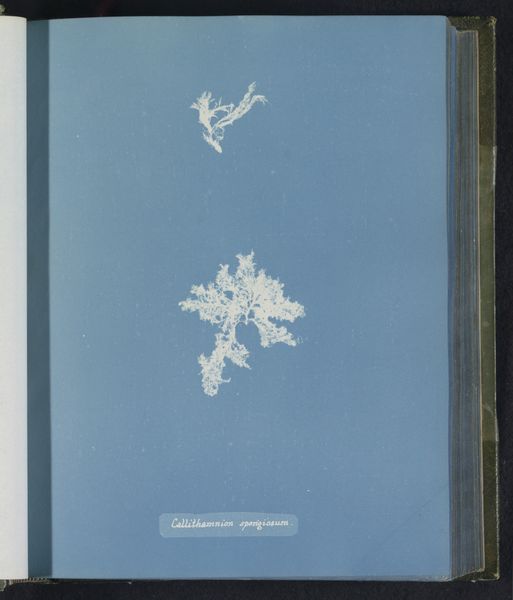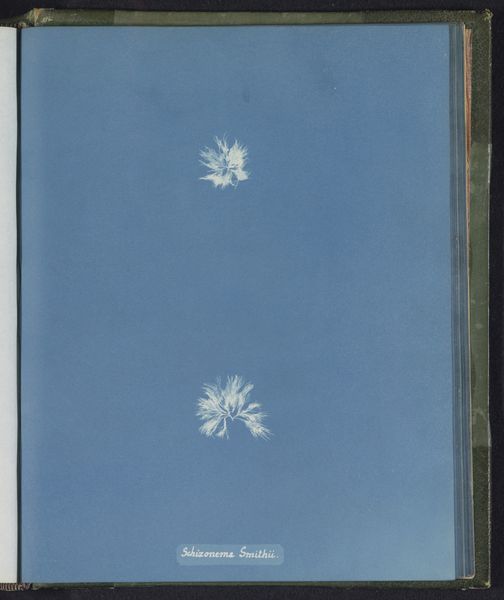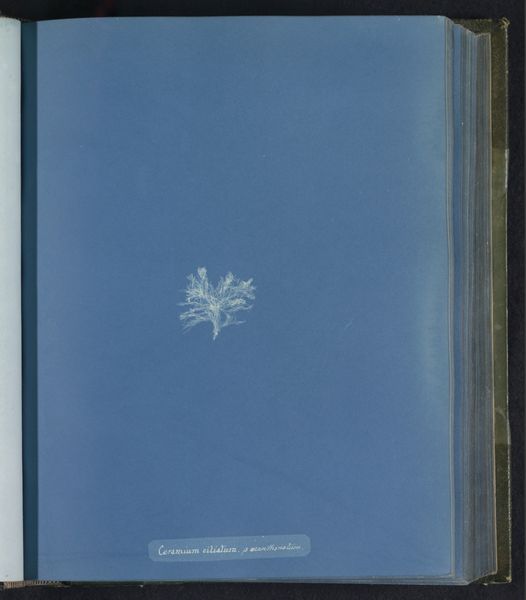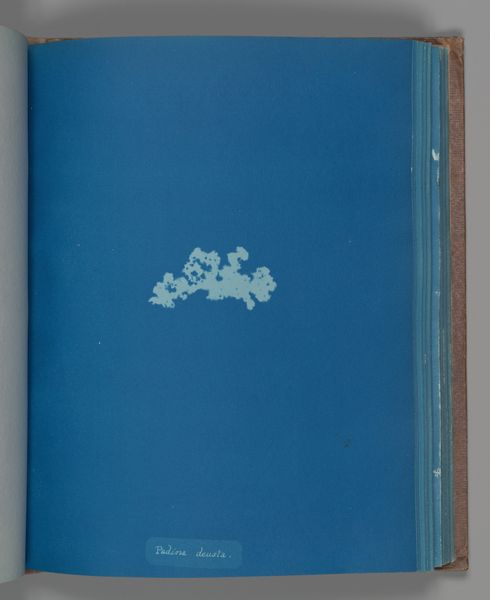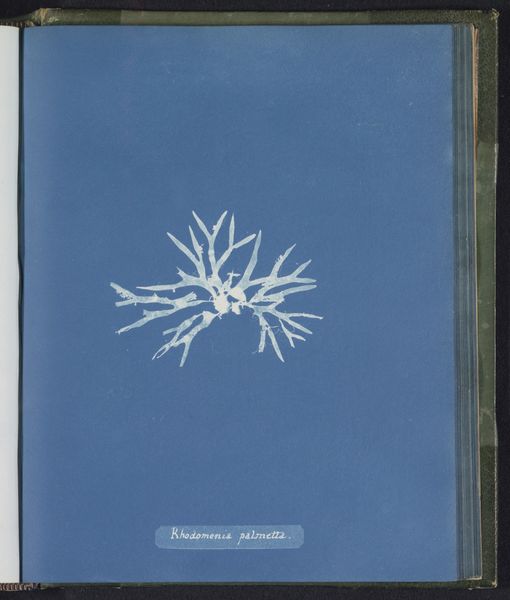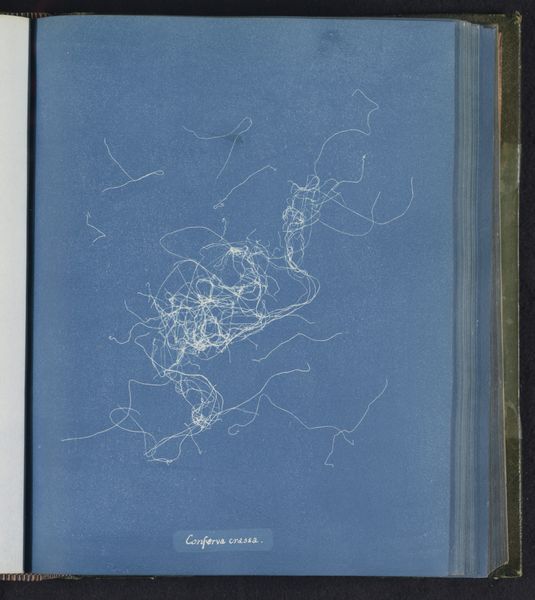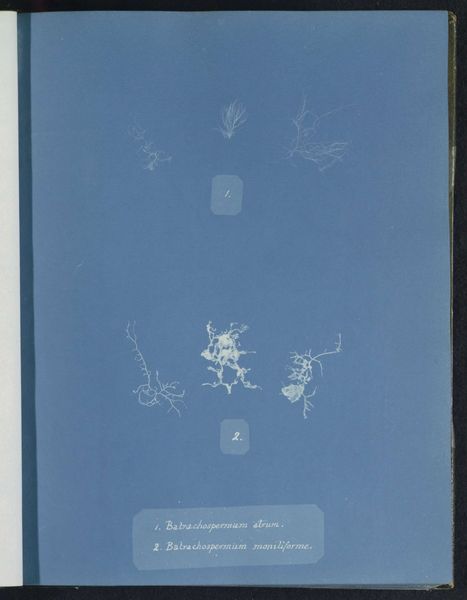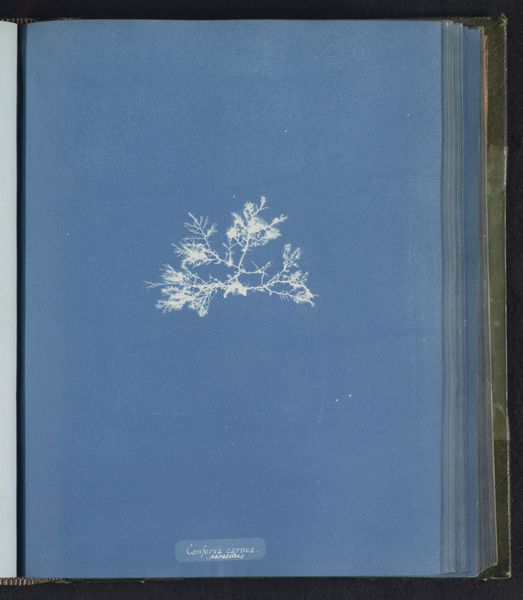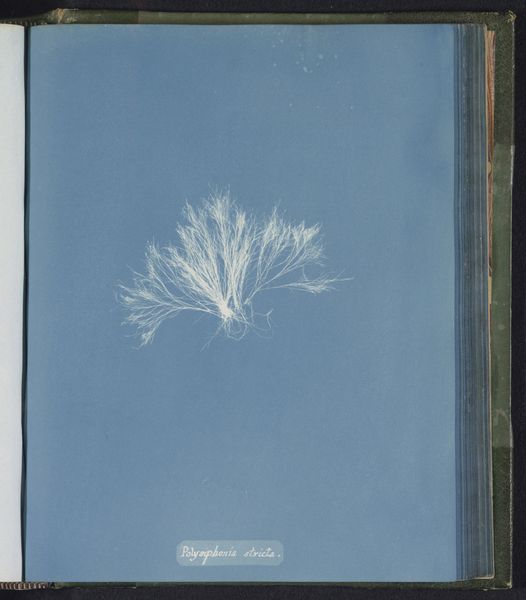
print, cyanotype, photography
# print
#
cyanotype
#
photography
Dimensions: height 250 mm, width 200 mm
Copyright: Rijks Museum: Open Domain
Curator: This is Anna Atkins' "Callithamnion polyspermum", dating from the 1840s or 50s. Editor: A deep Prussian blue! Almost dreamlike, with that ghostly white form floating in the center... Like a memory half-submerged. Curator: Precisely. What's striking is how Atkins utilized the cyanotype process – a very early form of photography, really – not just to document but to poetically reimagine this seaweed. It’s so sparse, and yet manages to evoke the unseen dynamics within its creation and display. Editor: I love thinking about the hands involved. Collecting the specimen, carefully arranging it, preparing the chemicals, the sun printing the image. Each stage a distinct action rooted in labour and human movement. These are important points to recall that help contextualize our reading of "high" and "low" art categories and their significance or lack thereof. Curator: The fact that she published these cyanotypes in "Photographs of British Algae: Cyanotype Impressions," making it arguably the first book illustrated with photographic images…it’s a powerful blend of art and science. Editor: And what a gesture—publishing in that era! I keep imagining the physicality, too, of that blue dye. What are its qualities, I wonder? Heavy? Viscous? It's remarkable how a "simple" process could generate such nuanced shades, this very evocative tone. Curator: It becomes about process: exposing paper, light as the protagonist. It pushes the plant's tangible form beyond pure representation. I read an article once describing Atkin’s piece as an exercise that lies “at the threshold of art.” It is quite amazing to stand on that liminal space. Editor: The commodification of Atkins' work throughout modernism also stands out for me. How this imagery circulates says quite a bit about how historical perspectives around the status and worth of different image making processes were being redefined as the technology of mass-production emerged. The aesthetic allure for viewers then might differ a great deal from our own contemporary engagements today. Curator: Right, which I feel also makes one appreciate how Anna has left such a mark on the botanical scientific record as well. We may admire it today, however this visual account played an enormous function beyond our appreciation today. Editor: Agreed. It really allows one to meditate on the labour behind creation in relation to our current relationship with art making as well. Thank you!
Comments
No comments
Be the first to comment and join the conversation on the ultimate creative platform.

